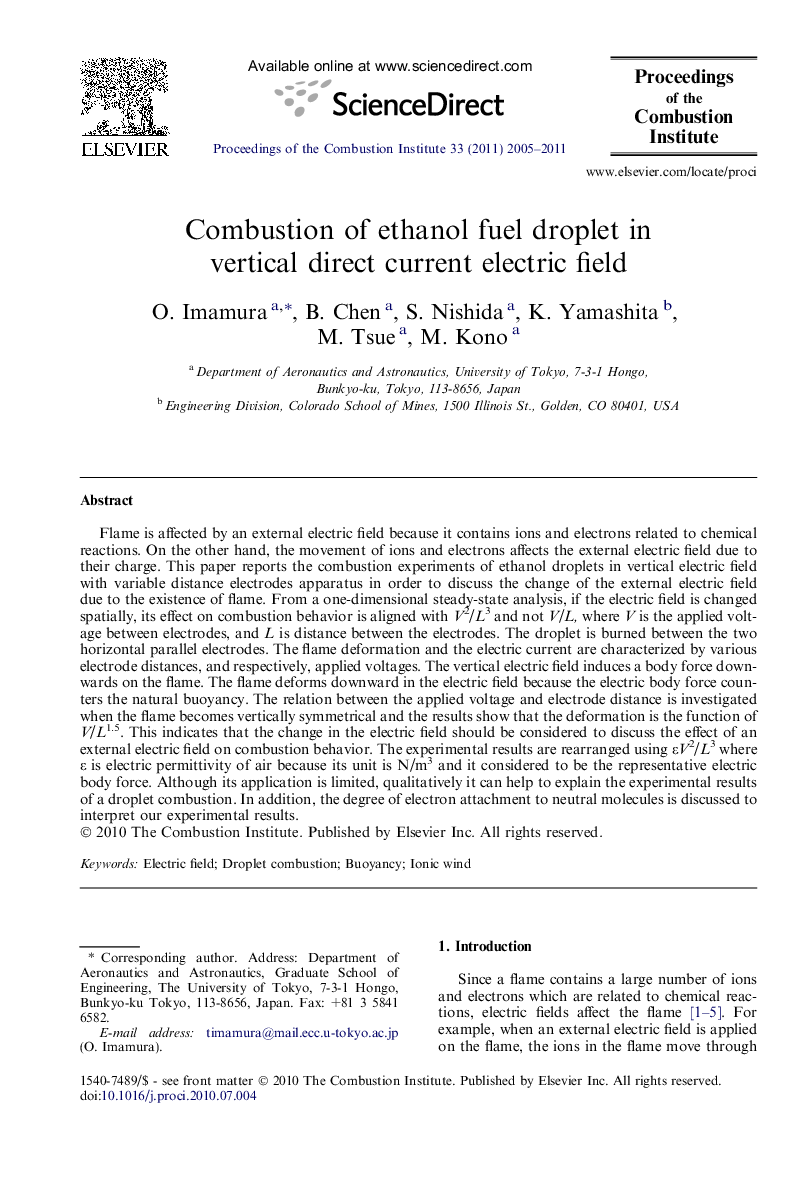| Article ID | Journal | Published Year | Pages | File Type |
|---|---|---|---|---|
| 240647 | Proceedings of the Combustion Institute | 2011 | 7 Pages |
Flame is affected by an external electric field because it contains ions and electrons related to chemical reactions. On the other hand, the movement of ions and electrons affects the external electric field due to their charge. This paper reports the combustion experiments of ethanol droplets in vertical electric field with variable distance electrodes apparatus in order to discuss the change of the external electric field due to the existence of flame. From a one-dimensional steady-state analysis, if the electric field is changed spatially, its effect on combustion behavior is aligned with V2/L3 and not V/L, where V is the applied voltage between electrodes, and L is distance between the electrodes. The droplet is burned between the two horizontal parallel electrodes. The flame deformation and the electric current are characterized by various electrode distances, and respectively, applied voltages. The vertical electric field induces a body force downwards on the flame. The flame deforms downward in the electric field because the electric body force counters the natural buoyancy. The relation between the applied voltage and electrode distance is investigated when the flame becomes vertically symmetrical and the results show that the deformation is the function of V/L1.5. This indicates that the change in the electric field should be considered to discuss the effect of an external electric field on combustion behavior. The experimental results are rearranged using εV2/L3 where ε is electric permittivity of air because its unit is N/m3 and it considered to be the representative electric body force. Although its application is limited, qualitatively it can help to explain the experimental results of a droplet combustion. In addition, the degree of electron attachment to neutral molecules is discussed to interpret our experimental results.
